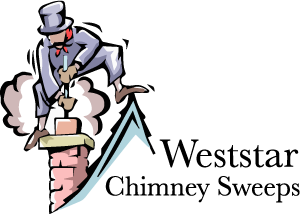Chimney Services » fire safety
Our Company Blog
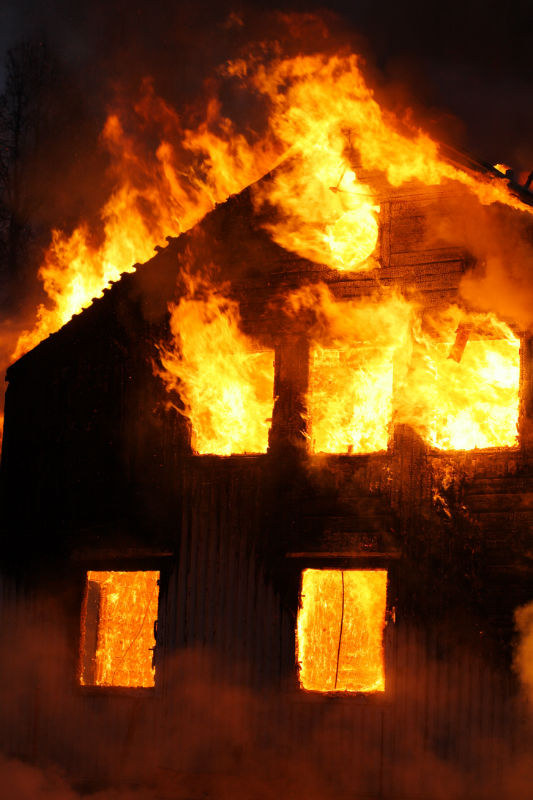
by Mike O'Mara | Oct 28, 2016 | fire safety
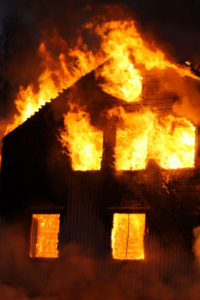 Most homeowners are aware of the various safety measures they should take around their home. Whether it is regularly checking the smoke detectors, cleaning out the gutters, keeping furniture dust-free, or any of the countless chores that make a household run efficiently, it seems that there is always work to be done and appliances to fix up.
Most homeowners are aware of the various safety measures they should take around their home. Whether it is regularly checking the smoke detectors, cleaning out the gutters, keeping furniture dust-free, or any of the countless chores that make a household run efficiently, it seems that there is always work to be done and appliances to fix up.
One that is not thought about as frequently is the dryer. It seems like a harmless enough device, but the truth is that dryer vents are the cause of nearly 3000 home fires annually. This statistic increases throughout the fall and winter months meaning that now is the time to get any dryer issues addressed! Learn more about how to safely maintain your dryer below.
Check For Lint
When it comes to lint build-up, the lint trap is not the only place you should be checking. Check underneath the lint trap and always scan the inside of the dryer to ascertain that nothing is piling up. Ensuring that lint is cleaned out of every nook and cranny could make all the difference when it comes to keeping your appliance safe for regular use.
Hire A Professional
When it comes to installation, hiring out is the best option for ensuring your machine runs efficiently. Improper installation can cause issues and make the dryer unsafe for regular use. An expert will know what steps to take and how to properly connect the various parts and venting systems.
You will also want to hire out when it comes to regular cleanings. Many do not see the necessity in having your dryer vents professionally cleaned throughout the year, but this is a vital step in home care! Regular cleanings and inspections will offer you peace of mind, knowing your home is safe, and will ensure that your clothes are being dried on the first drying cycle.
Dry Safely!
There are lots of things you can do (or avoid doing) that will help your dryer run more efficiently. Be sure to only run the machine when you are at home and awake so that you will be alert to anything that may be malfunctioning. When drying items, make certain they are safe to use in a dryer. Any type of rubber, plastic, or foam is not suitable for dryer use and should be air-dried. Reading labels will help immensely in knowing what is safe to dry and what is not.
If your lint trap is at all damaged or loose, then refrain from using the dryer until it can be replaced. Also, avoid putting too much laundry in the dryer at one time, as this may cause it to overheat. When in doubt, always play it safe and avoid any potentially risky scenarios.
At Weststar Chimney Sweeps we know the importance of a well-maintained dryer. We pride ourselves on providing expert dryer vent cleaning services and will be happy to help you keep your household as safe as possible. Give us a call today to schedule an appointment!
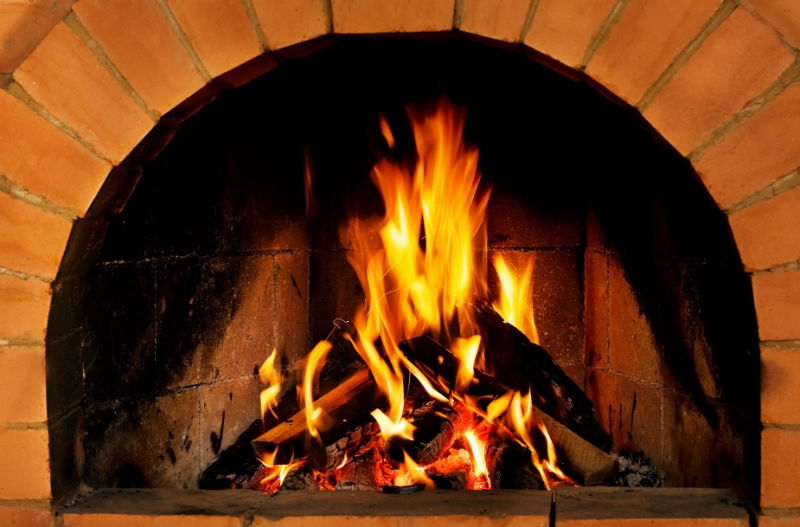
by Mike O'Mara | Mar 1, 2016 | Chimney Maintenance, fire safety, Fireplaces
When you have a fireplace in your home, ensuring that it works safely is one of the most important responsibilities you have as a homeowner. Making sure your fireplace and chimney are in good condition can help you fulfill this responsibility. Of course, the most important thing you can do to guarantee your chimney and fireplace work safely and efficiently is to schedule an annual professional chimney sweeping and inspection. Weststar Chimney Sweeps is proud to provide these maintenance services to the residents of the San Diego area, and we only employ chimney sweeps who have been trained and certified by the Chimney Safety Institute of America (CSIA). Since safety is our top priority, we would like to share with you some other tips on how to be sure your fireplace is safe.
Outside The Home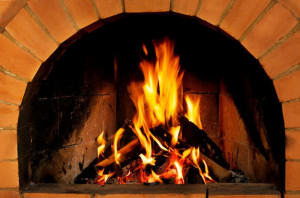
You need to check to see if there is a chimney cap installed at the top of your chimney as this prevents water leaks, keeps birds and animals out, and other important functions. If getting on your roof is too hazardous, you can use binoculars to get an up-close look at the condition of the cap to check for signs of damage and debris building up on the cap. While you are using the binoculars, check to see if the flashing system looks tight and shows no signs of corrosion damage, and then look to see if the flue liner is visible above the crown. You should also look for cracked or missing bricks from the chimney as well as any leaning or other signs of structural damage. Take a look at the trees near the chimney to see if any limbs are directly above the chimney. If you find any signs of damage or problems, contact us at Weststar Chimney Sweeps to ask us to come by to examine things further.
Inside The Home
Now you can check out your fireplace to see if anything looks like a potential problem or a safety hazard. According to HouseLogic, you will need a flashlight to look at the condition of the damper to be sure it opens, closes, and seals correctly. It is important that your damper works properly to keep air from leaking out the chimney. Then, open the damper completely and shine the flashlight up the chimney to look for any signs of animal invasions like nesting materials. To be sure nothing is blocking your flue, look up the flue, and if you can see sunlight at the top, your flue is clear with no blockage. Your next step is to look at the hearth to inspect the fireplace surround and firebox to be sure there are no cracked or missing masonry materials like bricks and mortar. This type of damage is very serious and can lead to dangerous hazards. The last thing you should look for any signs of moisture inside the firebox because this means you have a chimney leak somewhere in your chimney. As with any outside damage, any interior damage or possible issues deserves professional attention, so you need to call us as soon as possible to avoid any damage becoming worse.Ensuring the safety of your chimney and fireplace is extremely important. If you need professional assistance, contact us at Weststar Chimney Sweeps to ask us to come by to give your chimney an inspection from our CSIA-certified chimney technicians.
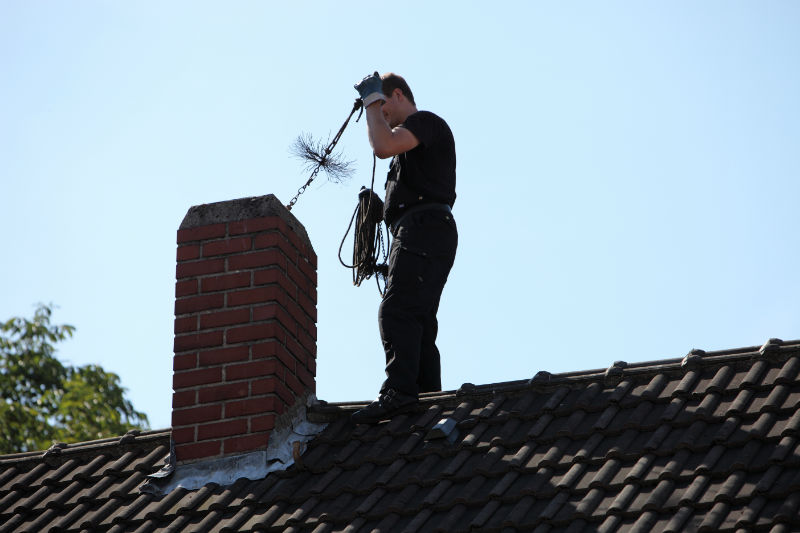
by Mike O'Mara | Oct 28, 2015 | Chimney Maintenance, Chimney Sweeping, fire safety
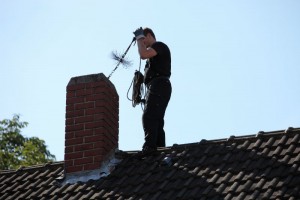
Call on a certified pro like those found at Weststar Chimney Sweeps to sweep your chimney
You may have seen chimney cleaning logs that claim to remove and reduce the accumulation of creosote in your chimney when you burn one of these logs in your fireplace or stove. You may even have thought that this could take the place of your annual professional chimney sweeping. However, when something sounds too good to be true, it usually is. Weststar Chimney Sweeps agrees with the Chimney Safety Institute of America (CSIA) that using chimney cleaning logs is not a substitute for the job our CSIA-certified chimney sweeps will do when they perform this yearly maintenance task on your chimney. We would like to tell you more about this product and why you should never rely on it as a way to properly and safely clean your chimney.
What are chimney cleaning logs?
A chimney cleaning log is a chemical product that does actually remove a portion of accumulated creosote from both masonry and metal chimneys. It does this through catalytic action that takes place when the log is burned in a fireplace or wood stove.
Why are chimney cleaning logs not a substitute for a professional chimney sweeping?
For one reason, a professional chimney sweeping from Weststar Chimney Sweeps will guarantee that every bit of accumulated creosote will be removed safely from your chimney. When you burn a chimney cleaning log, deposits of creosote will flake off and could either possibly cause a chimney fire by igniting after falling off or end up on the smoke shelf, where it creates another potential fire hazard.
Another reason is that a professional chimney sweeping includes much more than just creosote removal. Your chimney will be inspected to look for possible damage and potential problems. Our CSIA-certified chimney sweeps will also check for flue blockages and can take away birds’ or animals’ nests, leaves, and other debris that are blocking the exit of your chimney. This reduces the risk of a very hazardous situation: carbon monoxide leaks.
Should I use chimney cleaning logs in between my annual chimney sweepings?
The CSIA recommends that this type of chemical product should only be used under the supervision of a qualified chimney professional. Sometimes, layers of creosote can be so thick that chemical chimney cleaners must be used to change the chemical composition of creosote from hard or tacky to brittle or powdery in order to completely remove all of the creosote buildup. Our sweeps have been trained to use these chemical cleaners and know how to use them safely.
Have you scheduled your annual professional chimney sweeping yet? Contact us at Weststar Chimney Sweeps to make an appointment to have your chimney properly cleaned.

by Mike O'Mara | Aug 31, 2015 | Chimney Maintenance, fire safety

Not sure what a damper is or what it does? Weststar Chimney Sweeps is here to help.
At Weststar Chimney Sweeps, we are often asked by our customers to explain damper locks and why they are necessary. These questions typically come from those who have just had a home inspected for real estate purposes and have been told by the home inspector that they need to install damper locks to be compliant with the California Uniform Building Code. We know exactly how to keep you under compliance with this code, and our Chimney Safety Institute of America (CSIA)-certified chimney technicians can install damper locks in your chimney system. We would like to tell you more about damper locks to inform you of this important and necessary safety component.
What exactly is a damper lock?
Also known as a damper clamp or a damper stop, a damper lock is a small C-clamp or steel beam clamp that serves to keep the damper in a fully open position.
Why do I need a damper lock?
According to the California Uniform Building Code, damper locks are required to be equipped on dampers for systems that vent any type of gas appliance. Whenever you burn a fire in your gas appliance, the damper must be locked open for safety reasons. This can prevent carbon monoxide from being forced back into your home. If the damper is closed, this poisonous gas has no way to exit out of the chimney. Without carbon monoxide detector alarms installed in your home, you and your family could easily become seriously ill from carbon monoxide poisoning as this toxic gas is odorless and tasteless.
Why are damper locks only required for gas appliances?
If you forget to open your damper when you are burning wood, the problem becomes obvious when the room quickly fills with smoke after lighting the fire. As we mentioned earlier, there are no obvious signs for not opening the damper during a gas-fueled fire. This is why the California Uniform Building Code has required that the damper be locked in a fully-open position. You will be protected from the dangers of carbon monoxide if you forget to open the damper or if your gas appliance is turned on accidentally.
How can I prevent heat loss from my home when the damper must be locked fully open?
To help keep the heated air from your gas fire inside your home, Weststar Chimney Sweeps can install glass doors in front of your fireplace. However, you should keep in mind that if you have a prefabricated or factory built fireplace, glass doors may not be an option for safety reasons.
Have more questions about damper locks? Contact us at Weststar Chimney Sweeps so that we can help you be compliant to this important state building code.
by Mike O'Mara | Jan 30, 2015 | fire safety
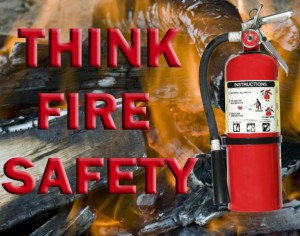
Make sure you are prepared in the case of a house fire!
Whether or not you have a fireplace in your home, there is always a possibility of a house fire. If a fire does break out in your home, you may only have as little as two minutes to be able to escape. The best way to protect yourself and your family is the identification and removal of all fire hazards from your home. Another excellent way to protect yourself, your family, and your home is to know and follow important home fire safety tips. At Weststar Chimney Sweeps, we like to educate our customers on fire safety, and we would like to share with you some fire safety tips we feel are essential.
Install Multiple Smoke Alarms
According to the Red Cross, 60% of house fire deaths occur in homes with no smoke alarms installed. Smoke alarms should be installed on every level of your home, inside bedrooms, and outside sleeping areas. Make it a monthly routine to check your smoke alarms to be sure they are still working properly. Smoke alarms will usually last for at least 10 years; however, you will have to change the batteries to keep them working properly.
Have an Escape Plan in Place
Everyone in your home should know two ways to escape from every room in your home. Designate a meeting place outside the house to be sure everyone has gotten out safely. Use a two-minute time frame when you are planning your escape routes. Practice your escape plan with your family on a regular basis to be sure everyone knows how to proceed if an emergency should occur. Include waking up to smoke alarms, low crawling, and meeting outside during your escape plan practices. Be sure everyone in the house knows how to dial 911. Teach family members how to stop, drop, and roll if their clothes happen to catch on fire.
Cook Safely
Never leave the kitchen unattended when cooking, frying, or broiling food, and do not leave your home when roasting, boiling, baking or simmering food. Set a timer to alert you when your food should be done cooking, baking, boiling, or roasting. Keep all flammable items like pot holders, towels, clothing, and plastic away from the stove. Keep all pets off cooking surfaces and counter-tops to prevent them knocking things onto the burners and to protect them from possibly burning themselves.
Practice Common Sense
Keep flammable items at least three feet away from space heaters, fireplaces, and other heating appliances. Turn off portable heaters when you leave the room and when you go to sleep. Never smoke in bed. Talk to your children on a regular basis about the dangers of fire. Always keep matches and lighters out of reach from children.
Be Aware of the Dangers of Carbon Monoxide
Just as you do with smoke alarms, install carbon monoxide detector alarms on every level of your home, inside bedrooms, and outside sleeping areas. If one of these alarms goes off to alert you of the presence of carbon monoxide in your home, move quickly to the fresh air outdoors or stand by an open window or door. Never use generators, grills, camp stoves, or any other gasoline, propane, natural gas, or charcoal burning devices inside a home, a garage, basement, crawlspace, or other partially enclosed space.
If you would like to know more home fire safety tips, contact Weststar Chimney Sweeps. As part of our responsibilities as CSIA-certified chimney sweeps, we take pride in educating our customers on fire safety procedures and precautions.
by Mike O'Mara | Oct 16, 2014 | Chimney Maintenance, fire safety
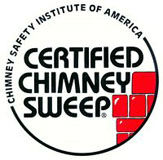
Look for the CSIA seal when evaluating a chimney company for hire
Hiring a chimney sweep who has been certified by the Chimney Safety Institute of America (CSIA) to perform your annual chimney cleaning and inspecting ensures you have a highly trained and qualified technician doing the job. A CSIA-certified chimney sweep can be entrusted to be certain your chimney is properly cleaned, safe to use, and in excellent working condition. Our chimney sweeps at Weststar Chimney Sweeps have been through the CSIA certification process, which gives them further training, skills, and knowledge in this industry. Our customers often ask us what this certification means, and we would like to answer this by telling you more about the importance of this professional commitment.
What is the CSIA?
A non-profit, educational organization, the CSIA is dedicated to preventing and eliminating of chimney fires, carbon monoxide leaks, and other chimney-related dangers that can result in injuries or death. To achieve this goal, a vast collection of resources is provided to educate the public, chimney and venting system professionals, and fire prevention specialists about the proper maintenance of fireplace, chimney, and venting systems. The CSIA offers the only national certification program in the chimney and venting system industry.
What are the responsibilities and commitments of a CSIA-certified chimney sweep?
When a chimney sweep completes the training for CSIA certification, he or she must uphold specific obligations, which include:
● Practicing CSIA-recommended chimney and venting safety techniques
● Improving skills, extending a knowledge base, and learning new techniques to stay updated on safety standards for the chimney and venting of fireplaces
● Knowing all applicable local building codes concerning chimneys and fully complying with these codes
● Following closely all manufacturers’ installation instructions for chimney and venting products
● Dealing honestly with customers, refraining from unfair and deceptive practices, and informing customers about essential chimney and venting safety procedures
● Behaving professionally and respectfully when performing chimney and venting duties.
What is the process of CSIA certification?
To become certified by the CSIA, one must do the following:
● Attend a one-day intensive review session in person or a one-week review session online
● Pass a one-hour exam based on the 2011 edition of the CSIA publication Successful Chimney Sweeping and the 2013 edition of NFPA 211: Standard for Chimneys, Fireplaces, Vents, and Solid Fuel-Burning Appliances from the National Fire Prevention Association
● Pass an open-book 90-minute exam using his/her copy of 2006 International Residential Code, published by the International Code Council
● Agree to pay the Annual Certification Fee
● Sign the CSIA Code of Ethics
What topics are covered in the certification process?
To receive CSIA certification, one must prove proficiency in the following areas:
● Technical aspects of chimney dynamics and construction
● Skilled performances of the best and current techniques in the industry
● Wood-burning physics and the formation of creosote residue, which is one of the leading causes of chimney fires
● Familiarity of and compliance with all applicable codes, regulations, clearances, and standards
● Care and installation of a variety of types of solid fuel appliances
● Requirements by the US Environmental Protection Agency
To hire one of our CSIA-certified chimney sweeps, contact Weststar Chimney Sweeos today to schedule an appointment for your annual chimney sweeping

 Most homeowners are aware of the various safety measures they should take around their home. Whether it is regularly checking the smoke detectors, cleaning out the gutters, keeping furniture dust-free, or any of the countless chores that make a household run efficiently, it seems that there is always work to be done and appliances to fix up.
Most homeowners are aware of the various safety measures they should take around their home. Whether it is regularly checking the smoke detectors, cleaning out the gutters, keeping furniture dust-free, or any of the countless chores that make a household run efficiently, it seems that there is always work to be done and appliances to fix up.